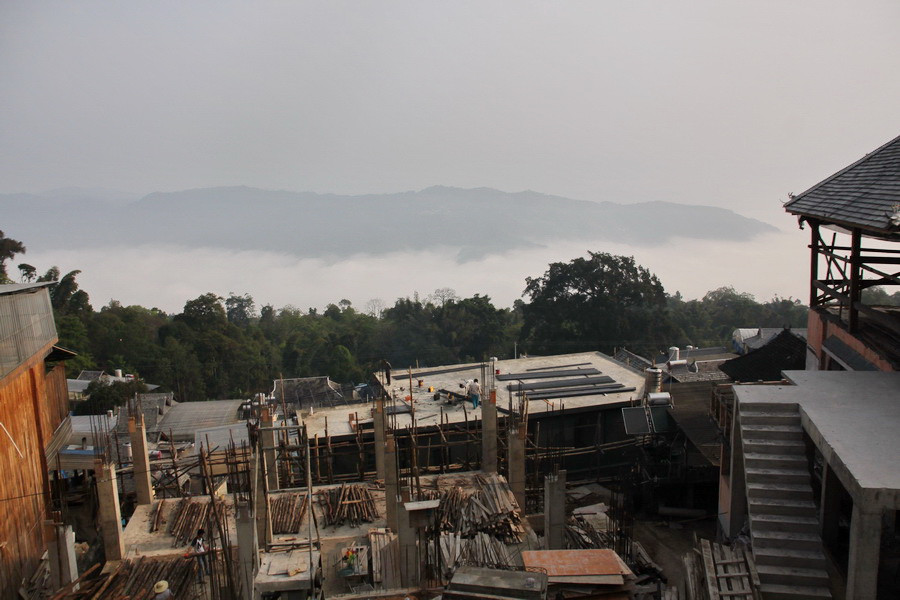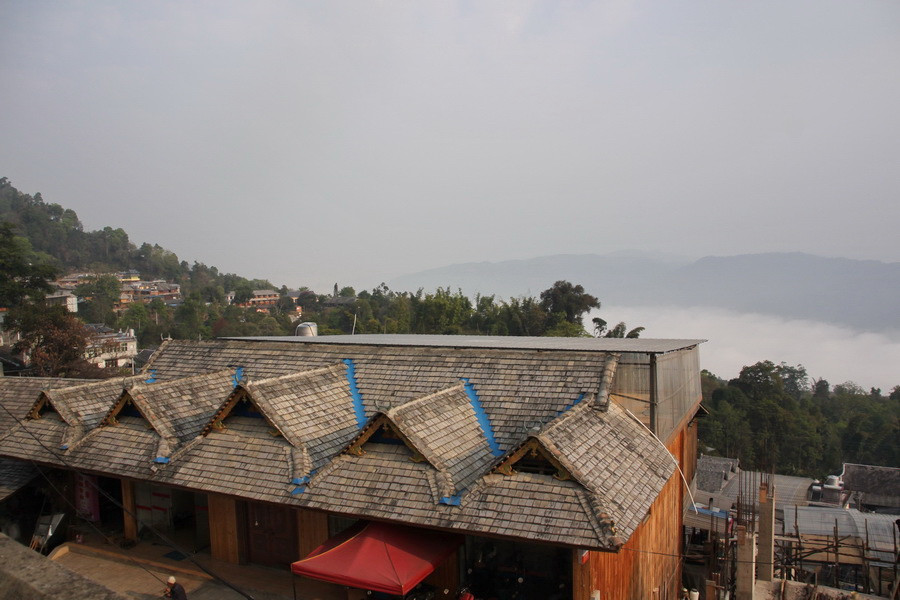
Jingmai Village of Huimin Hani Ethnic Town in Lancang County, Puer
🗺️ Overview & Setting
Administrative Status:
Jingmai Village falls under Huimin Township, Lancang Lahu Autonomous County, in Pu’er City, Yunnan Province. It encompasses 8 traditional hamlets, including Manggen, Mengben, Bangai, and Nanzuo.
Geographic Coordinates:
📍 Latitude: 22.2°N | Longitude: 100.0°E
Situated at the heart of Jingmai Mountain, elevation ranges between 1,120–1,500 meters. The area covers 66.88 km², enjoys a subtropical monsoon climate, with an annual average temperature of 19.4°C and 1,800 mm of rainfall.
Population & Ethnic Composition:
Home to 6,495 residents, predominantly of the Dai and Blang (Bulang) ethnic groups, alongside Hani, Wa, and others, Jingmai is a vibrant mosaic of multi-ethnic coexistence.
🏛️ Cultural & Natural Significance
🏆 World Heritage Recognition
In September 2023, the Cultural Landscape of Ancient Tea Forests of Jingmai Mountain was inscribed on the UNESCO World Heritage List—the world’s first tea-themed cultural heritage site.
Highlights include:
Over 28,000 mu (≈1,867 hectares) of ancient tea groves
A “Forest–Tea–Village” triadic ecosystem
Renowned as a “Living Museum of Tea Trees”
🎎 Ethnic Traditions & Rituals
Festivals: Dai New Year (Water Splashing Festival), Gate Closing & Opening Festivals
Rituals: Bulang Tea Ancestor Worship, Dai temple offerings
Intangible Heritage: Lahu lusheng dance, Dai silk weaving
Religious Landmarks:
Jingmai Dazhai Temple
Mengben Golden Pagoda
Nuogan Myan Temple
🌱 Economy & Industry
🍵 Core Industry: Ancient Pu’er Tea
Tea accounts for over 90% of total village income
Unified branding under “Jingmai Mountain Pu’er Tea”
2023 tourism figures: 400,000+ visitors
Full-chain quality management: “from tea gardens to teacups”
🌾 Supplementary Sectors
Eco-agriculture: Rotational farming of rice, corn; trials of under-forest herbal medicine
Cultural Tourism: Ethnic handcraft workshops, tea-making experiences, rural homestays
🧭 What to See & Do
🏡 Must-Visit Hamlets
| Village | Key Features | Notes |
|---|---|---|
| Wengji | Bulang stilt houses, tea ancestor rituals | Festival venue |
| Nuogan | Dai water village, Myan Temple | Cloud-sea viewpoint |
| Manggen | Radial layout, Sadi Temple | Heart of ancient tea forest |
🧵 Immersive Experiences
🥾 Tea Forest Trekking: Guide-led walks through ancient tea groves
🍃 Tea Workshop: From leaf picking to hand-rolling and stone pressing; personalized tea cake engraving
🛖 Ethnic Homestay: Stay in Dai bamboo houses or Bulang wood cottages, enjoy firepit songs and traditional long-table banquets
🚗 Travel Tips & Logistics
✈️ How to Get There
By Air:
Lancang Jingmai Airport (71 km away)
Xishuangbanna Gasa Airport (133 km away)
By Land:
From Pu’er City, take coach to Huimin Township (237 km), then transfer to local transport
Note: Mountain roads are stone-paved to protect tea trees; drive slow (20 km/h max)
🗓️ When to Visit
Best Season: November to March (cloud-sea vistas)
Avoid: Rainy season (June–September)
🚫 Etiquette & Dos/Don’ts
❌ No climbing or carving on ancient tea trees
✅ Always ask permission before picking leaves
🙏 Remove shoes when entering temples
📷 No photos during sacred rituals
🚴 Nearby Exploration
Walk or bike to adjacent villages like Mengben and Nanzuo
Discover the motto: “One Village, One Ethnicity – One Hamlet, One Tea Heritage”


 7 Days GolfingTour
7 Days GolfingTour
 8 Days Group Tour
8 Days Group Tour
 8 Days Yunnan Tour
8 Days Yunnan Tour
 7 Days Shangri La Hiking
7 Days Shangri La Hiking
 11 Days Yunnan Tour
11 Days Yunnan Tour
 6 Days Yuanyang Terraces
6 Days Yuanyang Terraces
 11 Days Yunnan Tour
11 Days Yunnan Tour
 8 Days South Yunnan
8 Days South Yunnan
 7 Days Tea Tour
7 Days Tea Tour
 8 Days Muslim Tour
8 Days Muslim Tour
 12 Days Self-Driving
12 Days Self-Driving
 4 Days Haba Climbing
4 Days Haba Climbing
 Tiger Leaping Gorge
Tiger Leaping Gorge
 Stone Forest
Stone Forest
 Yunnan-Tibet
Yunnan-Tibet
 Hani Rice Terraces
Hani Rice Terraces
 Kunming
Kunming
 Lijiang
Lijiang
 Shangri-la
Shangri-la
 Dali
Dali
 XishuangBanna
XishuangBanna
 Honghe
Honghe
 Kunming
Kunming
 Lijiang
Lijiang
 Shangri-la
Shangri-la
 Yuanyang Rice Terraces
Yuanyang Rice Terraces
 Nujiang
Nujiang
 XishuangBanna
XishuangBanna
 Spring City Golf
Spring City Golf
 Snow Mountain Golf
Snow Mountain Golf
 Stone Mountain Golf
Stone Mountain Golf















